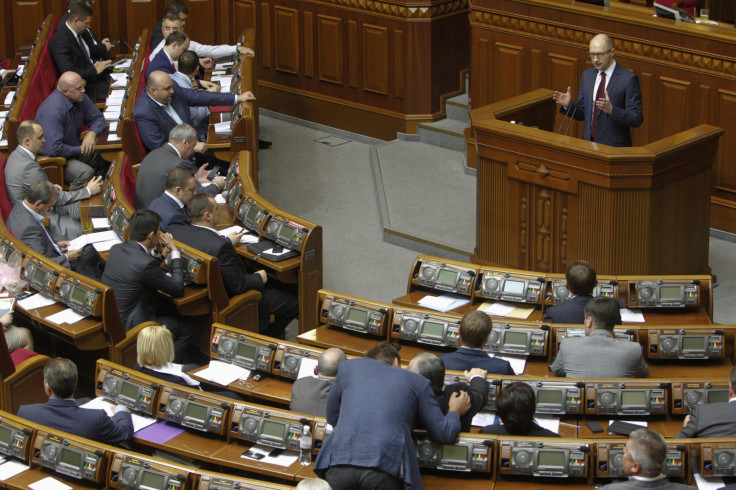Ukraine’s Parliament Votes To Open Soviet-Era KGB Archives To Public

Shortly after voting to ban both Nazi and Soviet imagery, Ukraine’s parliament, the Verkhovna Rada, voted to open up the country’s archive of Soviet-era KGB files to the public, which could reveal decades' worth of information on secret arrests, “disappearings” and the intricate operations of Ukraine’s KGB wing. The bill passed with 261 of parliament's roughly 420 members in favor.
Under the bill, titled “On access to the archives of the repressive organs of the communist totalitarian regime during 1917-1991,” the information would be transferred to the Institute of National Remembrance and be declassified. Reacting to the news, some social media users talked about their hopes of finding information on relatives who were persecuted by the Ukrainian KGB during the Cold War. The public will be able to submit requests for information to the Institute of National Remembrance.
The Ukrainian KGB, or Committee for State Security, operated directly under the Soviet-wide KGB, headquartered in Moscow. Each Soviet republic had its own wing of the security service, which was known for the brutal persecution of dissidents. Individuals were often executed or given long prison terms in Siberian gulags, where many died. The Ukrainian KGB was transformed into the modern Security Service of Ukraine, the SBU, following the fall of the USSR.
The archives of a handful of other Soviet-era state organizations also will be declassified and made available to the public, including the All-Russian Extraordinary Commission for Combating Counter-Revolution and Sabotage, the Ukrainian Extraordinary Commission for Combating Counter-Revolution, speculation, sabotage and malfeasance, the Supreme Court, the Supreme Court of Cassation and the Supreme Cassation Tribunal, according to UA Position.
The bill was one of a handful passed by the Verkhovna Rada on Thursday that set the state’s position on Ukraine’s volatile history. An earlier bill makes it illegal to deny the “criminal” history of Nazi and communist governments who occupied Ukrainian territory during the 20th century, according to the BBC. Street names honoring Soviet figures, monuments to Soviet figures and the display of Nazi or Soviet paraphernalia will all be banned if Ukrainian President Petro Poroshenko signs the bill into law.
That bill appears to address Russian accusations that the Ukrainian government is fascist and nationalist. Right-wing groups in Ukraine were visible in the Euromaidan movement of last year and have made themselves even more visible in the form of paramilitary groups created to fight the pro-Russian separatist movement in eastern Ukraine.
Dealing with Nazi imagery may prove to be an easier task than dealing with Soviet imagery. Hundreds of statutes, memorials and Soviet symbols pepper Ukrainian cities, and according to a lawmaker supporting the bill, they would all have to be taken down.
All Soviet “symbols including five-pointed stars and hammers and sickles ... disappear from the streets of Ukrainian cities,” said Yuriy Lutsenko, who belongs to the Petro Poroshenko Bloc. He added that those images are “equivalent” to swastikas.
Another bill, which will likely prove to be controversial, recognizes the efforts of the Ukrainian Insurgent Army (UPA) and a handful of other nationalist paramilitary groups that fought both Nazi Germany and Soviet occupiers in Ukraine. The UPA is widely criticized within the Russian-speaking Ukrainian community for its cooperation with Nazi elements toward the end of World War II, when the partisan group shifted its focus away from the Nazis and toward the communist forces moving in from Russia, who at the time were in a position to dominate Ukraine.
© Copyright IBTimes 2024. All rights reserved.






















